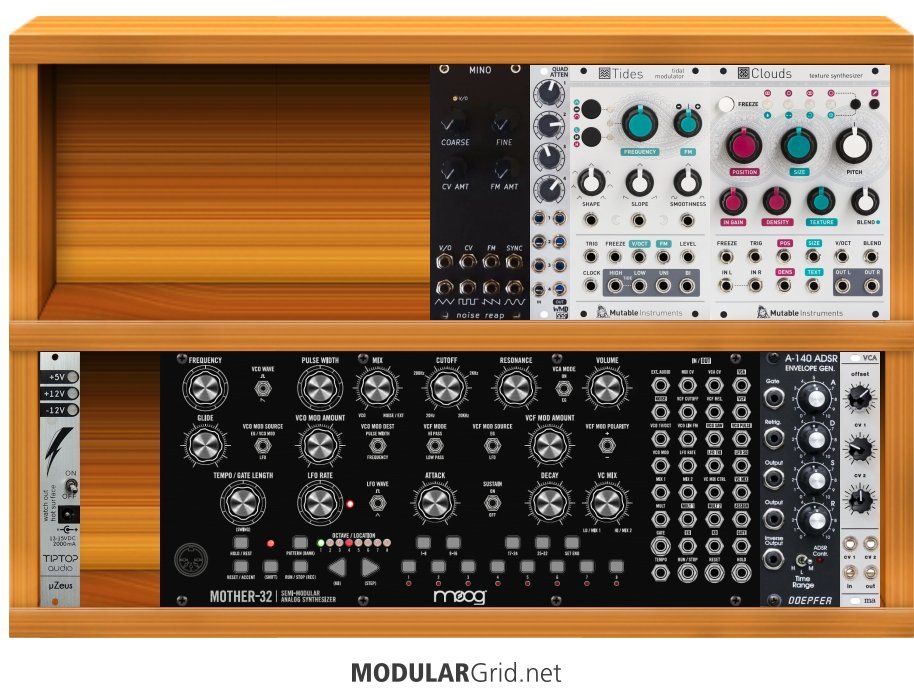Hi,
Total synth beginner here. I bought a Mother-32 at the Moog factory after taking their tour, and have noodled around with it and watched lots on YouTube over the last year. Now I want to expand and explore, so I ordered a DFAM, two Moog 60HP Eurorack cases (yes, I should have gotten 2x 104HP, but this actually gets me more space for modules), and several modules to start.
Here's my current plan: https://cdn.modulargrid.net/img/racks/modulargrid_730184.jpg
All that empty space exists in the top bay because today I ordered that second 60HP Moog case. In fact, I have already ordered everything you see there except the four Intellijel modules. I think I made a cognitive mistake in ordering the Abstract Data 3xVCA as it has no knobs to control the output voltage, only CV inputs, so I'll probably have to get another VCA as well. I have no idea how I will use the MATHS, but apparently I need it, so I ordered it. Growth space is a concern, so that's what drove me to order the narrow 4HP Frequency Central System X Envelope and to design in the 2HP Intellijel buffered mult.
Based on my plan, (a) what mistakes have I already made, and (b) what have I completely overlooked?
(For context, I have a lifelong interest in music, though I've mostly played guitar, sung, and played classical piano as a kid. My original intent in buying the Mother-32 was to get some traditional Moog sounds with a MIDI keyboard and be done. Now I'm liking the ambient stuff and the rhythmic modular stuff I'm hearing on YouTube. I'm not so interested in the more chaotic or abrasive stuff. I also have a Korg Minilogue which I have not explored much, but would like to integrate. I also have a MOD Duo from www.moddevices.com, which will serve as my infinite off-board effects unit, hence the Rosie output module with an "effects loop.")
Thanks for any insights!!
Derek


